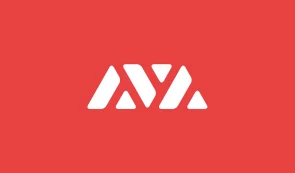What is Avalanche
Avalanche (AVAX) is an open-source blockchain platform that leverages the functionality of smart contracts and focuses on transaction speed, low cost, and environmental friendliness.
The platform supports all the Ethereum network tooling and contains a record number of block-producing nodes in its test network. The network has the potential to process over 4,500 transactions per second, making it one of the fastest blockchains on the market.
Avalanche allows users and enterprises to build their own financial assets and DeFi applications for a variety of use cases, as well as public and private blockchain networks.
AVAX is the native token of the blockchain platform, which like Ethereum, uses smart contracts to support various blockchain projects. The cryptocurrency has a limited maximum supply of 720 million tokens.
AVAX is used to power transactions in the Avalanche ecosystem, serving as a means to distribute system rewards, participate in governance, and facilitate network transactions through the payment of fees.
History of Avalanche
In May 2018, a paper was circulated by a pseudonymous group called Team Rocket that proposed a third-class consensus protocol called “Avalanche .”The blockchain itself was launched in 2020 by the Ava Labs team, consisting of Kevin Seknicci, Maofan Yin, and Dr. Emin Kyung Sirer, as it quickly gained popularity. After its launch, the total value locked in the protocol grew exponentially, reaching $3 billion.
Ultimately, Avalanche hopes to deliver a highly scalable blockchain that does not sacrifice decentralization or security.
Avalanche also finalizes all transactions instantly without waiting for confirmations, a property that has proven extremely attractive to the crypto community. A transaction on the network is finalized in approximately one second. Compared to existing decentralized networks, this is extremely fast.
The goal of the network is to achieve the fastest finalization time for blockchain transactions from day one. The finalization time is the period of time it takes for a crypto transaction to be processed and considered permanent and irreversible. Once a transaction reaches finality, it can never be rolled back or changed.
Consensus mechanism and structure
The Avalanche consensus protocol claims to combine the advantages of two other sets of consensus protocols known as “Classical” and “Nakamoto”.
Avalanche consensus, like Nakamoto consensus, is a probabilistic protocol. After Nakamoto’s work, the world still wanted a protocol with all the advantages of Nakamoto consensus (reliability, scale, decentralization) and all the advantages of classical consensus (speed, fast finalization, and energy efficiency).
- Classic protocols: They are fast, environmentally friendly, and low maintenance but are typically not decentralized or scalable. An example of such a protocol is HotStuff, famous for being used in Meta Platforms’ (formerly Facebook) stablecoin project, Diem (formerly Libra).
- Nakamoto protocols: These protocols offer decentralized, stable, and scalable blockchain networks – as is the case with Bitcoin. But running the network is expensive, and transactions are not fast.
Avalanche’s main innovation is that it is made up of three blockchains rather than the usual one. The reason for this design choice is quite brilliant: Each blockchain is specialized to a task within the broader Avalanche ecosystem, rather than one chain doing them all:
- Chain C – A decentralized platform for creating and trading digital assets such as crypto tokens. Transaction fees are paid to AVAX.
- Chain X – A metadata platform that coordinates Avalanche’s validators. It also tracks and enables the creation of new subnetworks where new blockchains are developed.
- Chain P – A blockchain using the Ethereum Virtual Machine (EVM) that allows the creation of smart contracts.
Distributing tasks across different chains helps maintain the flexibility of the Avalanche platform, allowing it to achieve the golden trinity of blockchain characteristics – decentralization, security, and scalability.
The parallel nature (having more than one chain) of Avalanche’s consensus protocol is what allows the network to validate transactions significantly faster than Ethereum.
Unlike Ethereum, where the network burns only a fraction of the transactions, Avalanche burns absolutely all of the transaction processing fees.
How transactions are validated
- The validator is presented with a set of transactions that have been issued and is asked to decide which transactions to “accept.”
- The client node (node) presents the virtual machines (VMs) with their transactions, and the VMs will provide information to help the client determine which transactions are acceptable.
- The authenticator selects a subset of those transactions that do not conflict, marks them as preferred, and attempts to accept them over the network.
- All nodes that query this validator receive their last preferred choice for this decision.
- This validator selects K nodes from the entire list of validators (the probability of selection is weighted by the stake size) to query for its preferred solution.
- Each queried validator responds with its preferred solutions, the validator’s votes are updated accordingly, and confidence is increased.
- Meanwhile, other nodes also select random validators from the set of validators to be queried for their preferred answer and update their answers accordingly.
- This continues for at least M rounds or until a sufficient confidence threshold is reached, whichever happens last, with K validators being chosen randomly (without replacement) each round.
- Once a confidence threshold is reached, the transaction decision is fixed as final.
- If “accepted,” the transaction is sent to the VM to be processed; if “rejected,” the transaction is removed from the consensus.

